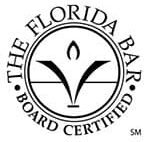When you get married, you have a big decision to make – will you take your spouse’s last name or keep your own? At the start of your marriage, sharing a last name may have made you feel more like a team. But now that you’re filing for divorce, your partner’s last name may feel more like a burden. It’s not uncommon to want to reclaim your birth name as you start this new chapter in your life. “Changing name after divorce” is a commonly submitted question for our firm, so you’re not alone! It’s part of learning how to move on after divorce.
How to Change Your Name After Divorce
If you’re wondering how to change your name after divorce, you’ve come to the right place.
What documents will you need to change, and how? If you have kids, can you change their last names too? Unfortunately, like most legal processes, it can be complicated – especially if your divorce is already final. However, reclaiming your former name is possible with the right information and the right legal counsel on your side.
How to Request a Name Change in Your Divorce Decree
By far, the simplest way to change your name after divorce is to request it in your initial divorce decree. We mention this in the top questions to ask a divorce lawyer. If you have a Tampa divorce attorney, ask them to include your request to reclaim your former name in your Decree of Dissolution.
Once a judge grants your divorce, your divorce decree serves as legal proof to change your name on your Social Security card and driver’s license. If you lose the original documentation, you can request a copy of your decree by contacting the court that filed the divorce.
Most courts charge a small fee (roughly $3) for a certified copy with a raised seal, which is required if the copy is to be used for legal purposes such as a name change.
Is It Ever Too Late to Change Your Name After Divorce?
While it’s recommended that you change your last name during the divorce process, the stress and frustration of it all may have caused you to put it off. Is it ever too late to change your last name?
The short answer is no – whether your divorce was finalized five months ago or five years ago, it’s never too late to reclaim your birth name.
The process of requesting a name change post-divorce varies by state. In Florida, you can
request to modify your divorce decree. A Tampa court order modification lawyer can help with this. If the court denies your request for modification, you must fill out the standard paperwork for an adult name change in your state.
Filing a name change petition takes time and can cost up to hundreds of dollars in fees – so if your divorce is not final yet, asking your lawyer to include a formal name change request in your divorce decree can save you a lot of hassle.
How to Change Your Last Name After Divorce Using an Adult Name Change Petition in Florida
Here’s how to change your name after divorce using an adult name change petition:
- Submit a background check
- Sign your petition in front of a notary public
- Pay a fee (anywhere between $200 and $300) to submit your filings to your local circuit court
- Attend a hearing
Once you’ve completed this process, a judge will approve your request and sign a Final Judgment of Name Change. Finally, you’ll need to obtain a certified copy of this form to move on to the next step – updating your documents.
Documents to Update After Changing Your Name
Just like when you got married and changed your last name, you will have to update your important documents all over again. Yes, it’s a hassle, but it’s a necessary evil.
Once you’ve received a certified copy of your divorce decree granting your name change or your Final Judgment of Name Change, you can update your social security card, driver’s license, and any additional documents.
Social Security
Your social security should be the first thing you update with your new name. Changing your name with the Social Security Administration (SSA) cannot be done online – you must request an update in person or by mail. You will need:
- Document granting your name change (divorce decree or court order)
- Proof of citizenship (birth certificate, naturalization certificate, or citizenship certificate)
- Proof of identity (driver’s license, passport, or state-issued ID)
Remember that all the forms you submit must either be original or a certified copy – a scanned copy of your birth certificate on your printer at home won’t cut it.
Once you’ve gathered the documents above, you must apply for a social security card. Submit everything to your local SSA office or by mail – you will not be charged for your new card, but expect to wait up to 2 weeks for it to arrive.
Driver’s License
Once you’ve updated your name with the SSA, you’ll want to update your information with the Department of Motor Vehicles. Yes, that means a trip to the dreaded DMV. Unlike your social security, updating your driver’s license is not something you can do via mail – you’ll have to go in person, so ensure you have everything you need to avoid making a second trip. You’ll need to bring:
- Your current driver’s license or other original document validating your identity
- The certified document granting your name change (divorce decree or court order)
- Your Driver License and Identification Card (ID) Application, which you can fill out online before your trip to the DMV
- Your Social Security Number (SSN)
Requirements vary by state – check with your state’s DMV website to find out what rules apply to you. For example, some states may require additional documentation to prove your identity, such as tax or banking records.
Additional Institutions to Notify After Name Change
After your legal name has changed, you may also need to notify the following institutions:
- Your bank
- Your child’s school
- Credit card companies
- Your employer
- Professional organizations
- State Department (to update your passport)
- Your landlord
- Utility companies
It’s a long list, but the sooner you cross everything off, the less likely you will run into problems.
Can You Change Your Child’s Last Name After a Divorce?
One of the most common reasons people choose not to change their last name after a divorce is because they want to keep the same last name as their children. Changing a child’s last name is a much more complicated legal process than changing your own, but it can be done.
Two things can happen when you submit a name change petition for your child – the child’s other parent can agree to the change or object to it.
If the other parent agrees, you will receive a consent form from a county clerk for the other parent to sign. The court will almost always grant the name change in this situation.
If the other parent objects, the decision will be made in court. Ultimately, it is up to a judge to decide whether a name change is in the child’s best interest. To prove this, your testimony can include reports showing how rarely the other parent visits the child, missed child support payments, and/or a written statement signed by the child (if they’re old enough) explaining why they want to change their name.
Even if you can change your child’s last name successfully, that doesn’t affect the other parent’s rights and responsibilities regarding things like visitation and child support. Making changes in these areas is a separate legal process.
Divorce is Personal, but You Don’t Have to Go It Alone
The decision to change your name after divorce is a deeply personal one. Knowing how to change your name after divorce makes the legal process smoother, but it doesn’t make the emotional toll of the situation any easier.
No matter the circumstances surrounding a divorce, it’s a stressful time. Changing your name is just one part of a long and often confusing legal process, but you don’t have to go through it alone. A
family law attorney can help you navigate the challenges associated with divorce and ensure your rights are protected. Contact the Tampa divorce lawyers at Quinn & Lynch, P.A., to schedule your consultation now.
















